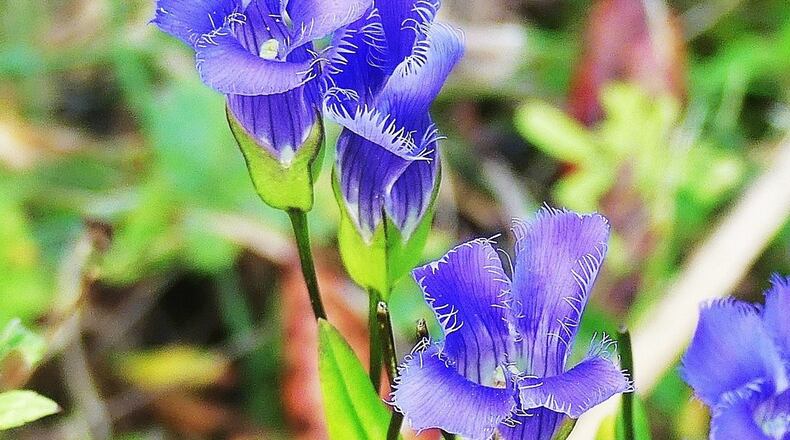The breathtaking fringed gentian has been called one of North America’s most beautiful — and rarest — wildflowers, celebrated in poetry and literature for centuries. Its iridescent blue flowers appear only in the fall, one of the year‘s last-blooming wildflowers.
Of the fringed gentian, naturalist Henry David Thoreau wrote in October 1859: “It is a very singular and agreeable surprise to come upon this conspicuous and handsome and withal blue flower at this season.”
It was first discovered in Georgia in 1964 and today is found only in a few locations in Towns and Union counties in North Georgia. Loss of habitat due to development and difficulty in growing it in cultivation contribute to its rarity, which landed it on the state’s protected plant list in 1992.
Last weekend, several of us Georgia Botanical Society members set out to find blooming fringed gentians in some sunny meadows that our leader, botanist Rich Reaves, knew about in North Georgia.
In a wild meadow in Union County, we found a bevy of fringed gentians in full flower — as well as the blooms of another gentian species, the stiff gentian. But the stunning sight of so many fully open fringed gentians was what took our breaths away and set off a photography frenzy.
In our group was Jim Drake, the author of the book "Gentians of the Eastern United States." His first encounter with a fringed gentian, he said, was along a country roadside. "It made such an impression on me that I began a quest to complete a photographic family album of Gentianaceae (the gentian family)," he said.
At another location we found a third blooming gentian species, the soapwort gentian. In addition, we found (despite the current drought) two species of grass-of-Parnassus wildflowers, whose brilliant white blooms are streaked with ornate green veins. All of this was in addition to the usual flowers of fall — goldenrods, asters and others.
IN THE SKY: From David Dundee, Tellus Science Museum astronomer: The moon will be full tonight. Mercury is low and Venus is very low in the west just after dark; Venus sets shortly thereafter. Jupiter is low in the southwest around dusk and sets a few hours later. Saturn is low in the south just after dark and sets around midnight.
About the Author
Keep Reading
The Latest
Featured


